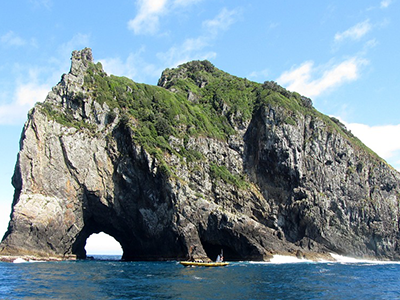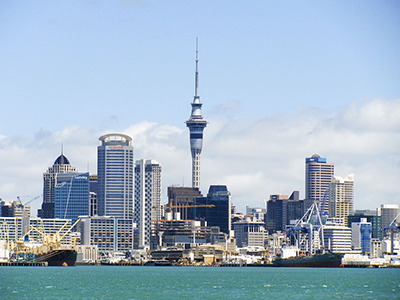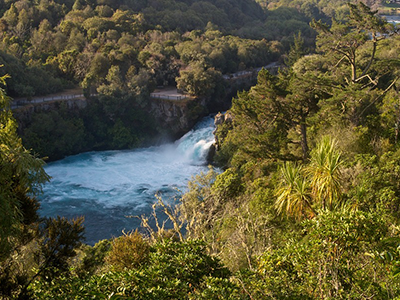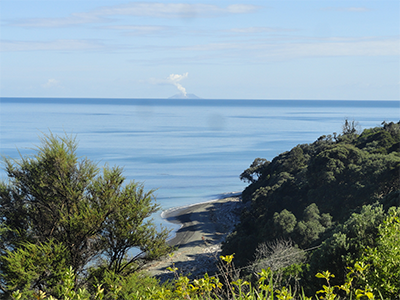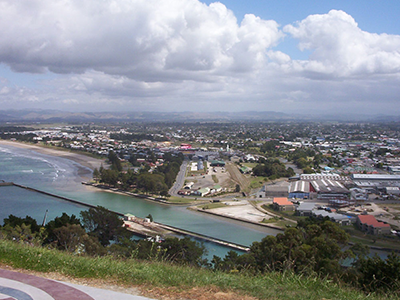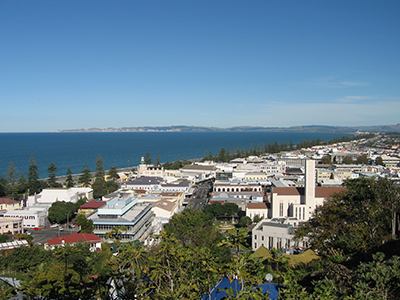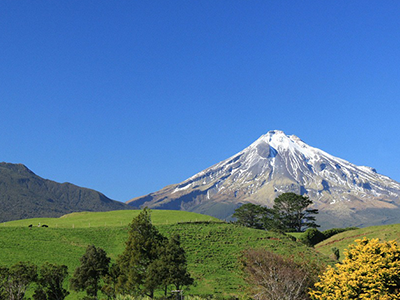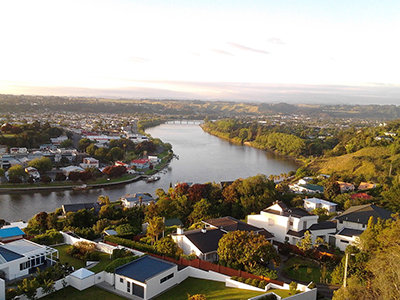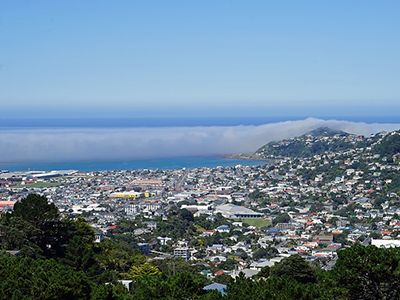1. Northland (Te Tai Tokerau)
This region extends from the tip of the Northland peninsula to Auckland, Northland is New Zealand’s least urbanised region and is famous for its ruggedness. Whangarei is the largest town in Northland with over 50,00 people, there are only 12 other towns with more than 1,000 people and the closest in number to Whangarei is the historic town of Kerikeri, with just over 7,000. Northland has the highest average annual temperature in the country and is a popular summer destination due to the warmth of its water and proximity to the Bay of islands. Find Northland hidden gems by downloading and following these maps.
2. Auckland (Tāmaki-makau-rau)
New Zealand’s most populated region (over 1.5 million people), Auckland is filled with amazing people and cultures from all around the world. It was named by the Governor of New Zealand in 1840 and named after George Eden, Earl of Auckland. Its Māori name means “Tāmaki with a hundred lovers” – named this way for its many desirable fertile grounds. It has also been called Ākarana, a transliteration of the English name. There are plenty of things to do and enjoy in New Zealand's largest city. A summer visit to the recently opened, aptly named, secret cove is paramount, so too are trips to Cornwall park and the La Cigale markets in central Auckland.
3. Waikato
With a population of over 450,000, Waikato covers the Hauraki, Coromandel, King Country, and parts of the Taupo and Rotorua areas. The name of this region is taken from New Zealand’s largest river (wai = “flowing water' and kato = “to come in as the tide”). A visit to Huka falls is a must for many, but did you know that you can visit the nearby Otumuheke stream and spa park too?
4. Bay of Plenty (Te Moana-a-Toi)
A large bight (curve) of New Zealand’s North-East coast of the North Island. It stretches from the bottom of the Coromandel Peninsula to Cape Runaway in the East. The largest populations in the Bay are Tauranga, part of Rotorua and Whakatane. Combining glow worms and sea kayaking, visit Lake McLaren and experience something truly unique by taking a Waimarino kayak tour.
5. Gisborne (Tūranga-nui-a-Kiwa)
With a population of just under 40,000 the region of Gisborne has steadily increased in population numbers since its early settlement over 700 years ago. It is where British navigator Captain Cook made his first landing in New Zealand on the Endeavour (you can visit multiple statues dedicated to the explorer) and is known as one of the first places in the world to see the sun on New Year’s Day. For amazing city views and to see a Cook statue take a trip up Titirangi reserve (Kaiti Hill), go to NZ national tree collection at Eastwoodhill Arboretum or visit 131 hectares of native trees, shrubs and other exotic tree species.
6. Hawkes Bay (Te Matau-a-Māui)
Further down the East Coast from Gisborne, the Hawkes Bay is a region that comprises over 160,000 people. Most of that number lives in the towns of Hastings, Napier, Wairoa, Waipukurau and Waipawa, but there are many other small settlements around the rest of the area. The region is well known for its horticulture and excellent climate for grape growing. Get out of the urban landscape and take a trip to the lookout at the top of Te Mata Peak, visit Mangatutu hot springs or get a photo with the Taumatawhakatangihangakoauauotamateaturipukakapikimaungahoronukupokaiwhenuakitanatahu sign (seriously, this is actually a place name).
7. Taranaki
Situated on the West Coast of the North Island, the area is popular for dairy farmers and is known for its 2,518m tall mountain, Mount Taranaki/Mount Egmont, which can be seen from most parts of the region. For a different and cost-effective experience, try Everybody’s Theatre or the Fun Ho! Toy Centre. Or visit Egmont National Park for your outdoor fix and a close view of the volcanic Mt Taranaki.
8. Manawatu-Wanganui
This large region of the lower North Island has a population of just under 250,000 people. Most of the population live in Palmerston North, Whanganui, Levin or Fielding. The region is made up of the Whanganui and Manawatu rivers, both of which are central to the towns. In the region the great Tongariro National Park is the oldest national park in the country, established in 1887. The slightly smaller Whanganui National Park, formed almost a century later is great way to explore NZ’s second-largest river along several trails, through valleys and up hills. Visit this site if you are looking for more to see and do in Manawatu.
9. Wellington (Te Whanganui-a-Tara)
New Zealand’s capital city, Wellington has a population of over 400,000 people and is located at the Southernmost part of the North Island. It takes its name from Arthur Wellesley, the first Duke of Wellington (a town in the English county of Somerset). In the Māori language it has three names - 1. Te Whanga-nui-a-Tara means "the great harbour of Tara".
2. Pōneke is a transliteration of Port Nicholson (the city's central marae).
3. Te Upoko-o-te-Ika-a-Māui, meaning “The Head of the Fish of Māui” a traditional name for the southernmost part of the North Island, derived from the legend of demi-god Māui, who fished up the North Island from his South Island waka. Some great things to do in Wellington are to take a walk to the Brooklyn wind turbine or visit the botanic gardens in the city.
Note: Population figures for each region were ascertained by searching stats at https://figure.nz/.
Who are iStudent Complaints and what can we help you with?
iStudent Complaints is an independent dispute resolution scheme established by the New Zealand Government. Our objective is to encourage swift settlement of contractual and financial disputes between international students and their providers in New Zealand.
As an independent and impartial service, we are not affiliated with any Education providers.
Why did we do this blog?
Even if we need to step in one day to help you resolve a dispute, we want you to enjoy studying and living in our amazing country as much as we do. To that end, we’ve created this content so that you may continue to explore and experience the best New Zealand can offer.
